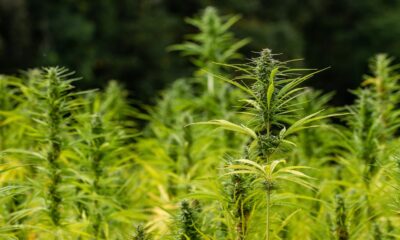Science & Health
People Are Skipping Sleep Aids In Favor of Marijuana, Study Reports

The scientific community is still unclear on whether or not marijuana can actually help treat sleep disturbances such as insomnia. A new study, however, found that fewer people purchase over-the-counter (OTC) sleep medications when they have legal access to cannabis.
“Our results show that the market share growth for sleep aids shrank with the entry of recreational cannabis dispensaries by more than 200% relative to the mean market share growth in our sample, and the strength of the association increased with each subsequent dispensary,” the paper, published in the December edition of Complementary Therapies in Medicine, concludes. “In particular, cannabis appears to compete favorably with OTC sleep aids, especially those containing diphenhydramine and doxylamine, which constitute 87.4% of the market for OTC sleep aids.”
“Recreational cannabis dispensaries greatly increase the number of individuals able to legally treat sleep disorders using cannabis, particularly those with mild to moderate sleep disorders.”
Researchers at the University of New Mexico and California State Polytechnic University used retail scanner data collected by the Nielsen Company to help them understand how access to recreational marijuana affected the sales of OTC sleep medications purchased at local stores in Colorado.
In their analysis, they studied the market shares of overall sleep aids—including supplements such as melatonin and pharmaceuticals such as diphenhydramine—at 587 stores. They also used monthly data from the Colorado Department of Revenue to compare the number of recreational dispensaries in each county as well as local cannabis retail sales figures.
“The negative association between cannabis access and sleep aid sales suggests a consumer preference for cannabis.”
It became legal for Colorado residents to purchase cannabis for adult use on January 1, 2014, and the study period covered December 2013 through December 2014.
According to the results, the market share for sleep aids was neither rising nor declining prior to a dispensary opening in the same county. After one did, however, the market share declined with each month of its existence. A regression model showed that sleep aid market share growth decreased by 236 percent after a dispensary entered the market, and this negative association increased as the number of dispensaries grew.
“The magnitude of the market share decline increases as more dispensaries enter a county and with higher county-level cannabis sales.”
“For the first time, we show a statistically significant negative association between recreational access to cannabis and OTC sleep aid sales, suggesting that at least some recreational purchasers are using cannabis for therapeutic rather than recreational purposes,” the study’s authors write.
“Additionally, despite a lack of direct clinical evidence on the effectiveness of self-managed cannabis as a sleep aid, our results indicate that enough individuals are switching from OTC sleep aids to recreational cannabis that we can identify a statistically significant reduction in the market share growth of OTC sleep aids in conjunction with access to recreational cannabis using a statistically conservative county-month-level treatment variable and a quasi-experimental research design,” the paper concluded.
“Our results are consistent with evidence that legal access to medical cannabis is associated with reductions in Scheduled II-V prescription medications (e.g., opioids and sedatives), many of which may be used in part as sleep aids,” the authors wrote.
“These findings support survey evidence that many individuals use cannabis to treat insomnia, although sleep disturbances are not a specific qualifying condition under any U.S. state-level medical cannabis law.”
Study author Sarah Stith, an applied microeconomist at the University of New Mexico, explained in a statement: “From a public health perspective, the possible widespread use of cannabis for less severe medical conditions both highlights its therapeutic potential and raises concerns regarding the risk-benefit tradeoffs of substituting a substance associated with abuse and dependence for relatively ineffective OTC medications with typically low levels of abuse potential.”
“From an economic or business perspective, regardless of underlying mechanism, our documentation of changing purchase behaviors has implications for multimillion-dollar US markets with OTC sleep aids likely just one example,” she said. “It is important for the medical community to recognize that the lack of medical guidance does not necessarily lead to a lack of medical use. Dispensaries and online forums are stepping up to fill the information vacuum as individuals are forced to take treatment into their own hands, with statistically evident effects on treatment choices.”
A ‘Significant’ Number Of Patients Stopped Taking Benzodiazepines After Starting Medical Marijuana
Photo by Wesley Gibbs on Unsplash















